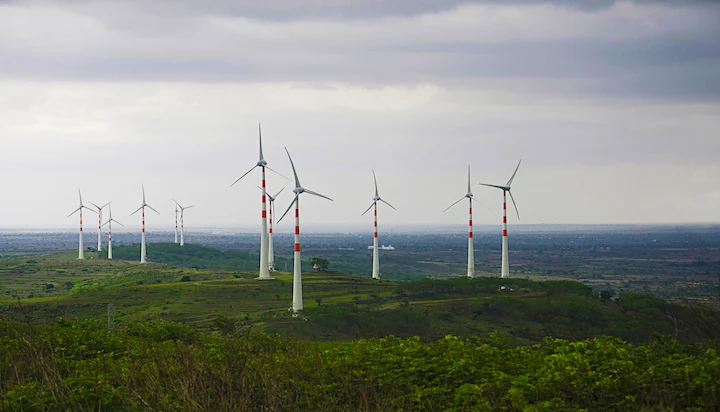The researchers found that policies on residential clean energy and air pollution regulation by curbing brick production and burning of agricultural residue have greater benefits than the policies on curbing emissions from industries and transportation
Integrating existing policies on air quality and clean energy in India can significantly reduce emissions of greenhouse gases (GHGs) up to 1.8 giga tonnes of equivalent carbon dioxide (GtCo2e) in 2030, researchers from the Indian Institute of Technology-Bombay (IIT-B) said.
Two researchers from the institute — PhD student Kushal Tibrewal and professor Chandra Venkataraman— set out to assess the benefits (climate co-benefits) of air quality and clean energy policies in the country using multiple metrics such as the global warming and temperature change potentials. Their paper, ‘Climate co-benefits of air quality and clean energy policy in India’, was published in the Nature Sustainability journal on December 14 last year.
“We assess climate co-benefits of policies addressing sustainable development goals, specifically air quality and residential clean energy access, to identify which of these might yield significant climate co-benefits and, therefore, be candidates to integrate into the country’s climate action plan,” said Venkataraman, co-author of the study and professor in the department of chemical engineering and associate faculty in the interdisciplinary programme in climate studies at IIT-B.
The researchers found that policies on residential clean energy and air pollution regulation by curbing brick production and burning of agricultural residue have greater benefits than the policies on curbing emissions from industries and transportation.
“We found residential clean energy programmes, specifically the adoption of liquefied petroleum gas cook stoves and household electrification, deliver significant reductions in emissions of warming short-lived climate forcers (wSLCFs or substances in the air that have shorter lifetime in the atmosphere than carbon dioxide) and related carbon dioxide emissions. However, only specific air quality programmes yield reduction in emissions of wSLCFs,” Venkataraman added.
For example, emissions control standards related to sulphur dioxide in electricity generation lead to reduction in sulphate particles. However, since sulphate particles are cooling agents in the atmosphere, their reduction can lead to warming. On the other hand, emission standards in sectors like fired brick production and curbs on agricultural residue burning can significantly reduce emissions of wSLCFs. Integrating these policies can improve emission control, said the researchers. Traditionally the approach towards climate policies has been to look at emissions from electricity generation, transportation and industries separately.
“The measures identified in the study are simultaneously linked to improving human health and food security, along with upgrading infrastructure and promoting sustainable cities and communities. Integrating these interventions into national climate policies can bring them under a more stringent surveillance,” she said.
“The divergence of the implications of some of the policies focusing on climate mitigation (long-term) and air quality does present a challenge for an economy like India. However, the focus of policy makers must definitely be on improving air quality in the near to medium term as the implications for health of the citizens is long-term and cumulative. The slow pace of roll out of the pollution control retrofits in power plants and the increasing prices of LPG in the post-pandemic period suggests that air quality has been accorded a lower priority,” Karthik Ganesan, fellow, Council on Energy, Environment and Water (CEEW), who was not a part of the project.
Source- Hindustan Times









